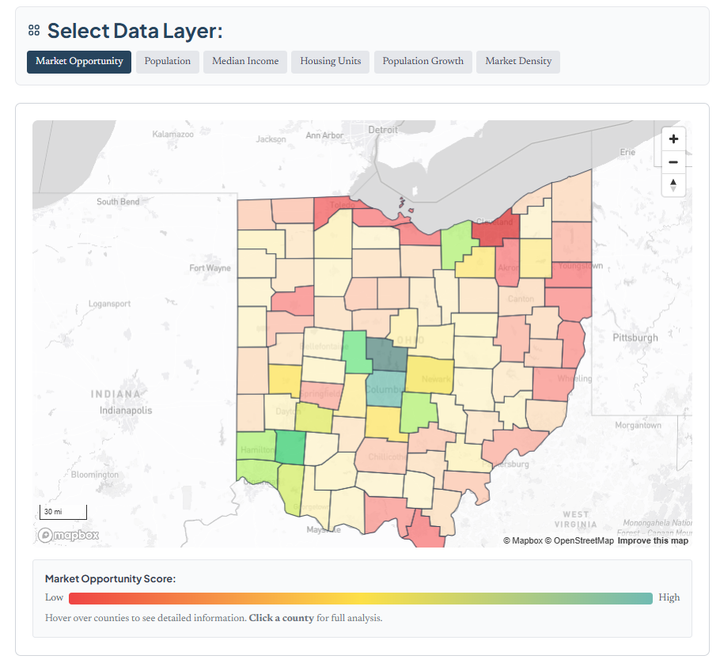SWOT Analysis Explained: How to Use It Effectively Across Business Strategy
Unlock the true power of SWOT analysis. Learn how to apply this timeless strategic tool across long-term planning, medium-range programs, and short-term projects—so your team speaks the same language and makes smarter decisions faster.

📌 What Is SWOT Analysis?
SWOT stands for Strengths, Weaknesses, Opportunities, and Threats. It’s a strategic‑planning framework used to assess internal attributes (strengths & weaknesses) and external conditions (opportunities & threats) to guide decision‑making and strategy WikipediaInvestopedia.
🔍 Origins & Evolution
- The tool was born from a 1960s initiative at Stanford Research Institute (SRI), where Robert F. Stewart and colleagues introduced a SOFT model—Satisfactory, Opportunity, Fault, Threat—that later evolved into SWOT Wikipedia+7Wikipedia+7Wikipedia+7.
- Harvard Business School figures like Kenneth Andrews and C. Roland Christensen also helped propagate these ideas through early strategic‑management texts in the 1960s and ’70s journals.aom.org+5Emerald+5Wikipedia+5.
- By the early 1970s, the acronym SWOT was well‑known and widely used across planning disciplines U.S. Economic Development Administration+12Wikipedia+12Wikipedia+12.
✅ Usefulness in Modern Product Development & Business Strategy
- Simplifies complexity into a clear 2×2 visual framework, enabling cross‑functional dialogue (marketing, product, ops, finance, etc.) Reddit+12perdoo.com+12ResearchGate+12.
- Helps teams identify strategic alignment—how to match strengths with opportunities (SO strategies) or convert weaknesses into opportunities (WO strategies), while mitigating threats (ST/WT) Wikipedia+1perdoo.com+1.
- Serves as an effective pre‑decision or early‑stage tool for product launches, market entry, expansion, or pivot decisions perdoo.comBusiness QueenslandPepperdine Graziadio Business School.
❗Common Misconceptions & Caveats
- SWOT is not an execution plan—it does not by itself solve problems. It flags areas that require follow‑through via tools like gap analysis or TOWS strategy development InvestopediaWikipediaEmerald.
- The results are only as good as the input: bias, uneven participation, and lack of prioritization can undermine effectiveness. Analysts have warned that superficial or rushed SWOTs deliver little value Emerald+3UT Research Info+3ResearchGate+3.
- It’s a static snapshot, which means an analysis done today can be obsolete quick depending on dynamic market conditions WikipediaThe Decision Lab.
🧭 Applying SWOT at Different Horizons
1. Long‑Range Business Plan (3–5+ years)
- Use SWOT to assess organizational foundations: what internal core competencies (strengths) and gaps (weaknesses) exist; what macro trends (regulations, technology, demographics) create opportunities or threats.
- Facilitate strategic visioning by aligning strengths and opportunities into growth pillars, while charting ways to reduce weaknesses and mitigate threats.
- Tip: Include cross‑departmental participation, historical insights, and external stakeholder views to build a robust, forward‑looking plan.
2. Medium‑Range Initiatives/Programs (1–3 years)
- Narrow focus to a major initiative (e.g. digital transformation, a platform rollout):
- What internal capabilities support initiative success—where are gaps?
- What external partners, trends, or funding streams may help? What competitor moves or regulation could block progress?
- Translate analysis into program design: line up strengths to opportunities (SO), and create WH/WO/ST tactics for mid‑term alignment.
3. Short‑Term Projects or Teams (3–12 months)
- A leanened SWOT works well at sprint or project level:
- Strengths: existing skills, tooling, legacy code, user insights
- Weaknesses: dependencies, tech debt, team bandwidth
- Opportunities: short‑term release windows, customer feedback loops
- Threats: staffing changes, vendor lock‑in, shifting scope
- Doing this collaboratively fosters mutual understanding across team roles and helps reduce miscommunication and misaligned expectations.
🗣️ Communication Advice: Building Shared Understandings
- Define each quadrant clearly for your context: what counts as a strength vs. a weakness? Internal vs. external?
- Use real examples, not abstractions (“We have strong API usability” vs. “We built a well‑documented REST API with 99.9% uptime”).
- Commit to a facilitated session where all voices can contribute—don’t let leadership dominate a SWOT; aim for inclusiveness to surface hidden drivers.
- After brainstorming, make the analysis actionable: decide which 3–5 items per quadrant matter most, and assign follow‑up owners and next steps.
- Keep it visible: embed SWOT outputs into dashboards, planning docs, OKRs or program roadmaps so that it informs decision‑making continuously.
🧪 Example Table (for Internal Alignment)
| Horizon | Use Case | SWOT Focus Dimensions | Intended Outcome |
|---|---|---|---|
| Long‑range | Annual / 3‑year business plan | Macro trends, core competencies, organization gaps | Directional strategy and goals |
| Medium-range | Major Initiative / Program | Program-specific strengths/weaknesses & external forces | Clear program design and risk mitigation |
| Short-term | Project / Team sprint | Team’s skills, tooling, near-term risks & opportunities | Shared expectations and sprint success |
✅ When to Use SWOT—and When Not to
Use SWOT when:
- You're aligning multiple teams on strategic context.
- Preparing for major decisions (new product, market shift, capital investment).
- Launching initiatives with cross‑functional impact.
Avoid SWOT when:
- You need to prioritize between dozens of issues (doesn’t rank).
- You need a playbook for execution—SWOT flags issues but doesn’t map them to tasks or resource allocation.
- Your business environment is so dynamic that the snapshot will age too quickly—consider ongoing intelligence systems or dynamic dashboards instead.
🎯 Summary & Quick Tips
- SWOT is a versatile foundational tool, not a complete method—best suited for early-stage strategy evaluation.
- It anchors strategic conversations across horizons (long-, medium-, and short-term) by bringing clarity to internal/external context.
- Misunderstandings (e.g. thinking it’s an implementation method, overloading a quadrant) can be avoided via clear definitions and disciplined facilitation.
- To be effective: keep it focused, use data-backed language, prioritize, and assign follow-up.
📎 External Resources & Next Steps
- Learn how to integrate SWOT into a broader gap analysis or TOWS framework for translating analysis into action plans WikipediaU.S. Economic Development AdministrationResearchGate.
- Explore alternatives like SOAR, SVOR, or VRIO depending on focus—e.g. strengths alignment, quality, or resource-based analysis WikipediaWikipedia.



Comments ()